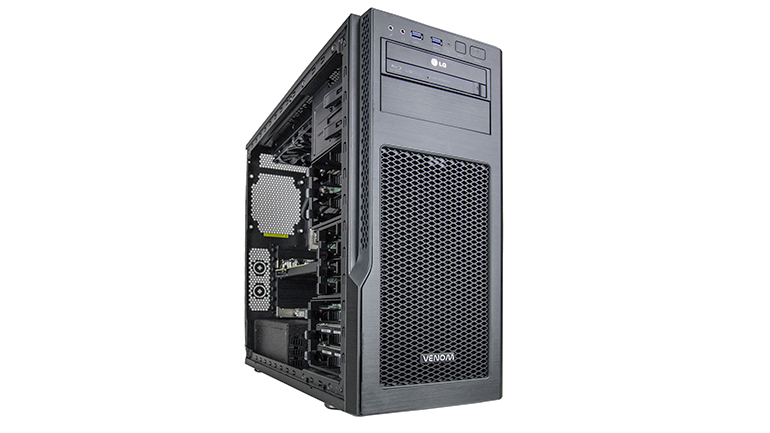'ZDNET Recommends': What exactly does it mean?
ZDNET's recommendations are based on many hours of testing, research, and comparison shopping. We gather data from the best available sources, including vendor and retailer listings as well as other relevant and independent reviews sites. And we pore over customer reviews to find out what matters to real people who already own and use the products and services we’re assessing.
When you click through from our site to a retailer and buy a product or service, we may earn affiliate commissions. This helps support our work, but does not affect what we cover or how, and it does not affect the price you pay. Neither ZDNET nor the author are compensated for these independent reviews. Indeed, we follow strict guidelines that ensure our editorial content is never influenced by advertisers.
ZDNET's editorial team writes on behalf of you, our reader. Our goal is to deliver the most accurate information and the most knowledgeable advice possible in order to help you make smarter buying decisions on tech gear and a wide array of products and services. Our editors thoroughly review and fact-check every article to ensure that our content meets the highest standards. If we have made an error or published misleading information, we will correct or clarify the article. If you see inaccuracies in our content, please report the mistake via this form.
Boston Venom 2501-0P review: Dual-socket workstation with faster Xeon CPUs and a lot more


Boston Venom 2501-0P
pros and cons
- Latest Xeon E5-2600 v4 processors
- Liquid cooling
- Dual socket
- Nvidia Quadro 4000 graphics
- NVMe flash storage
- Single power supply
- No SAS disk option
Workstation vendors generally follow Intel's lead and refresh their products every time a new processor gets launched. An example is Boston's new Venom workstation, the 2501-0P, which sports the latest Xeon E5-2600 v4 processors along with faster 2,400MHz DDR4 RAM. But that's not its only claim to fame, and there's a lot more under the hood to make workstation buyers sit up and take notice of what the 2501-0P has to offer.
Thinking inside the box
Often given scant attention by prospective purchasers, the chassis housing this particular Venom is surprisingly compact for a workstation -- particularly a dual-socket one. More than that, a good deal of thought has gone into the design to make it both look the part and take best advantage of what the new Xeon processors have to offer, especially through the use of liquid cooling technology.
Clocked at up to 3GHz and with a TDP as high as 160 watts per processor, the v4 Xeons can get really hot, so instead of passive heatsinks, closed-loop CoolIT ECO III technology is employed with a radiator and a pair of large-diameter fans to push unwanted heat out of the top of the chassis. This, in turn, features a magnetically attached mesh cover for ease of cleaning, with another pop-out filter grill at the front of the tower servicing the needs of two more fans positioned to direct cooling airflow through the storage bays.
Closed-loop liquid cooling keeps the Venom 2501-OP's powerful Xeon processors at a comfortable temperature.
There's lots of room here, with bays for six 3.5-inch and four 2.5-inch drives plus a couple of external bays, one of which holds a Blu-Ray rewriter. You get a 1000-Watt power supply to cope with all this, complete with modular cabling to help keep it neat and tidy. The end result is a well-configured workstation that keeps its cool without being unduly noisy, generating little more than an industrious 'hum' most of the time.
Performance to go
Based around a stock Supermicro motherboard and Intel C612 chipset, any of the new v4 Xeons can be specified. Our review system featured a couple of E5-2690 v4 chips. Sporting 14 cores (28 threads) each, this 2.6-3.5GHz processor has a TDP of 135W and is a good choice for both demanding analytic and graphical workloads. Buyers on a budget can save money by opting for one of the more modest SKUs, while those after the ultimate in performance can splash out to get more cores and threads with 22/44 available on the 2.2-3.6GHz E5-2699 v4, for example.
Another option would be a higher clock speed by opting for the 3.0-3.5GHz E5-2687W v4, although this only has 12 cores and can hit 160W and, on balance, may not deliver the same level of performance of slower-clocked alternatives.
Eight DIMM slots to take up to a terabyte of 2,400MHz DDR4 RAM are provided and, filled with 16GB ECC modules, gave us a more than decent 128GB. Together with the 28 cores and 56 threads in the Xeons, this enabled the Venom 2501-0P to turn in some impressive benchmark figures, including a score of 68733 for the 64-bit Geekbench 3 suite -- the highest we've seen for a workstation to date:
Top ZDNET Reviews
Two E5-2690 v4 Xeon processors helped the Venom 2501-0P post an impressive Geekbench 3 result.
Of course, fast processors by themselves are of limited value unless the other components are able to keep pace. The graphics subsystem is particularly important here, and with no CPU-integrated graphics controller a plug-in GPU card is required. Boston uses an Nvidia Quadro M4000 as the default offering on the Venom 2501-0P.
Graphics are handled by an Nvidia Quadro M4000 card.
A mid-range GPU designed specifically for workstation applications, this graphics card has 1664 CUDA processing cores and 8GB of GDDR5 memory. It also features four DisplayPort interfaces each able to handle a 4K display (4,096x2,160 at 60Hz with 30-bit colour) and, again, performed well in our benchmarks. Running Cinebench R15, for example, it enabled the Venom 2501-0P to achieve just under 160fps (frames per second) when running the OpenGL benchmark.
The mid-range Nvidia Quadro 4000 helped the Venom 2501-OP to an impressive score on the Cinebench R15 OpenGL test.
A good choice for a wide range of CAD/CAM and other graphically intensive applications, more demanding buyers can opt for even better productivity by upgrading to Nvidia's latest ultra-quick Quadro M6000. A 2-slot card, this comes with 3,084 CUDA processing cores and either 12GB or 24GB of GDDR5 memory, making for a real beast of a GPU that can really accelerate video processing. However, it's a far from a free ride, the Quadro 6000 bumping the Venom 2501-0P's price up by a massive £3,000 (ex. VAT).
Capacity and speed
Boston has also opted for a slightly different approach to the storage inside its new Venom. For large amounts of data the usual hard disks are employed, the default configuration being two 2TB SATA drives cabled to the on-board controller and configured as a mirrored pair (RAID 1).
The boot drive, however, is a flash SSD, which is fast becoming a standard option these days. On the Venom it's not an ordinary SSD interfaced using the on-board SATA controller, but an NVMe (Non Volatile Memory express) drive that plugs into a PCIe slot for much faster communication with the processors using four lanes of the PCI Express 3.0 bus.
Intel's NVMe-based SSD 750.
Predicted to, ultimately, supersede SATA and SAS altogether, NVMe drives are only just starting to hit the mainstream and, as with any new technology, carry a price premium. As such Boston has opted for a relatively modest 400GB Intel SSD 750 for the Venom, the idea being that it will be used primarily for the operating system and high-performance temporary storage of drawings, models and other work in progress.
Because it uses four PCIe lanes, the NVMe drive is rated as up to four times as quick as the equivalent SATA SSD; in our tests it really sparked up the performance of this Venom workstation.
Other features worth noting include two GbE network interfaces for LAN connectivity, six USB 3.0 ports and built-in RealTek audio as standard. Together these add the final finishing touches to what in our tests proved itself to be a well-configured yet compact workstation. Capable of handling a wide range of applications, from CAD/CAM and digital content editing to high-end data analytics and visualisation, the Boston Venom 2501-0P has all the right features and high performance technologies needed to make the most of the latest Xeon v4 processors.
Read more reviews
- Huawei TalkBand B3 hands-on: Unique Bluetooth headset and activity tracking wristband
- Moto Z Force Droid Edition review: Shatterproof display, battery to last, and functional modular design
- Teclast X98 Plus II 2-in-1 tablet review: Dual boot Windows and Android for work and play
- Obi Worldphone MV1 review: Quirky choices make for a charming smartphone